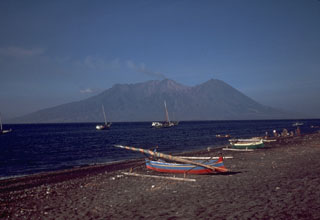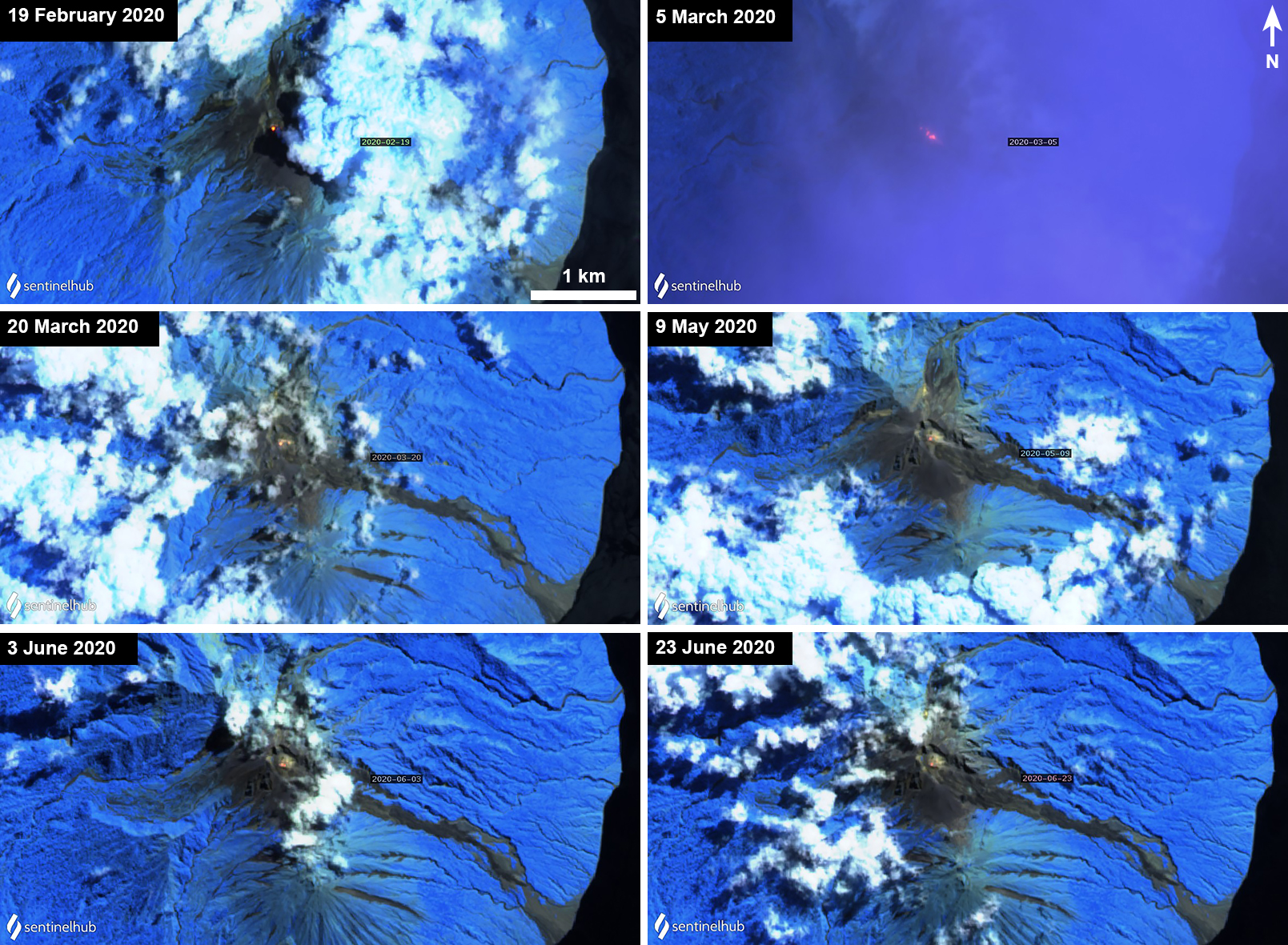Report on Sangeang Api (Indonesia) — August 2020
Bulletin of the Global Volcanism Network, vol. 45, no. 8 (August 2020)
Managing Editor: Edward Venzke.
Edited by Kadie L. Bennis.
Sangeang Api (Indonesia) Two ash plumes and small thermal anomalies during February-June 2020
Please cite this report as:
Global Volcanism Program, 2020. Report on Sangeang Api (Indonesia) (Bennis, K.L., and Venzke, E., eds.). Bulletin of the Global Volcanism Network, 45:8. Smithsonian Institution. https://doi.org/10.5479/si.GVP.BGVN202008-264050
Sangeang Api
Indonesia
8.2°S, 119.07°E; summit elev. 1912 m
All times are local (unless otherwise noted)
Sangeang Api is a 13-km-wide island located off the NE coast of Sumbawa Island, part of Indonesia's Lesser Sunda Islands. Documentation of historical eruptions date back to 1512. The most recent eruptive episode began in July 2017 and included frequent Strombolian explosions, ash plumes, and block avalanches. The previous report (BGVN 45:02) described activity consisting of a new lava flow originating from the active Doro Api summit crater, short-lived explosions, and ash-and-gas emissions. This report updates information during February through July 2020 using information from the Darwin Volcanic Ash Advisory Center (VAAC) reports, Pusat Vulkanologi dan Mitigasi Bencana Geologi (PVMBG, or CVGHM) reports, and various satellite data.
Volcanism during this reporting period was relatively low compared to the previous reports (BGVN 44:05 and BGVN 45:02). A Darwin VAAC notice reported an ash plume rose 2.1 km altitude and drifted E on 10 May 2020. Another ash plume rose to a maximum of 3 km altitude drifting NE on 10 June, as seen in HIMAWARI-8 satellite imagery.
The MIROVA (Middle InfraRed Observation of Volcanic Activity) analysis of MODIS satellite data detected a total of 12 low power thermal anomalies within 5 km from the summit during February through May 2020 (figure 42). No thermal anomalies were recorded during June and July according to the MIROVA graph. Though the MODVOLC algorithm did not detect any thermal signatures between February to July, many small thermal hotspots within the summit crater could be seen in Sentinel-2 thermal satellite imagery (figure 43).
Geological Summary. Sangeang Api volcano, one of the most active in the Lesser Sunda Islands, forms a small 13-km-wide island off the NE coast of Sumbawa Island. Two large trachybasaltic-to-tranchyandesitic volcanic cones, Doro Api and Doro Mantoi, were constructed in the center and on the eastern rim, respectively, of an older, largely obscured caldera. Flank vents occur on the south side of Doro Mantoi and near the northern coast. Intermittent eruptions have been recorded since 1512, most of them during in the 20th century.
Information Contacts: Pusat Vulkanologi dan Mitigasi Bencana Geologi (PVMBG, also known as Indonesian Center for Volcanology and Geological Hazard Mitigation, CVGHM), Jalan Diponegoro 57, Bandung 40122, Indonesia (URL: http://www.vsi.esdm.go.id/); Darwin Volcanic Ash Advisory Centre (VAAC), Bureau of Meteorology, Northern Territory Regional Office, PO Box 40050, Casuarina, NT 0811, Australia (URL: http://www.bom.gov.au/info/vaac/); MIROVA (Middle InfraRed Observation of Volcanic Activity), a collaborative project between the Universities of Turin and Florence (Italy) supported by the Centre for Volcanic Risk of the Italian Civil Protection Department (URL: http://www.mirovaweb.it/); Hawai'i Institute of Geophysics and Planetology (HIGP) - MODVOLC Thermal Alerts System, School of Ocean and Earth Science and Technology (SOEST), Univ. of Hawai'i, 2525 Correa Road, Honolulu, HI 96822, USA (URL: http://modis.higp.hawaii.edu/); Sentinel Hub Playground (URL: https://www.sentinel-hub.com/explore/sentinel-playground).



